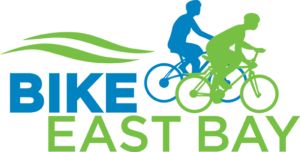
Back in the Saddle Apr 12, 2010 (Contra Costa Times – McClatchy-Tribune Information Services via COMTEX)
by Laura Casay

Back in the Saddle Apr 12, 2010 (Contra Costa Times – McClatchy-Tribune Information Services via COMTEX)
by Laura Casay
It was a 1992 Rockhopper Comp that got East Bay Bicycle Coalition board member Justice Baxter into cycling. Baxter, 33, had a crush on a girl in Walnut Creek. He lived in Oakland’s hilly Montclair district, and he was too young to drive. So he’d ride the Rockhopper to BART, visit his sweetheart and then head back up the Oakland hills to home. “It became a passion,” he says, “and it was a passion that lasted a lot longer than the short affair with that girl in high school. I started feeling the joy of being free.” Baxter is now co-owner of the Montclair bike shop Wheels of Justice. He and Barry Luck of Cycles of Change APC in Alameda share some tips on how to get back on a bike safely for summer.

Safety lighting: Lighting laws for evening and nighttime bicycle riding are similar to the laws for
cars. You must have a front light and a blinking taillight on by 30 minutes after sunset. “It’s a good idea to have lights on your bike any time you think people will not be able to see you well,” Baxter cautions, adding that lighting in the fog or in the early morning is also a good idea. The most expensive part of lighting is the battery drain, he says. He suggests investing in rechargeable batteries or newer USB-charged lights that you can plug into a computer to recharge before going riding again. LED lights are also longer-lasting and quite bright.

How to buy a bike: With all the Web sites and stores out there selling bikes, it can be confusing to actually purchase one. Baxter first suggests going to the closest bike shop where you feel the most comfortable. That doesn’t mean, he says, that the shop nearest to your house is the best. The hope is that you will develop a relationship with a salesperson who will help you find the bike you want, and also to encourage you to go back to the shop for fixes instead of tucking the bike in the garage forever because of a minor break. Second, Baxter suggests that you picture yourself doing what you want to do on the bike — whether it be cruising along a beach or pumping up hills — and how you want to feel when you are doing it. That will help the salesperson figure out which bike is the right fit. Also, expect to spend around $500 on a new bike. If you belong to your local bicycle coalition, most bike shops will give you a 10-15% discount on purchases of parts and accessories, which quickly pays for your coalition membership. Alternatively, there are many used bike options in the East Bay if you need to start off more economically. Check out: EBBC supporting bike shops for a shop near you.
Tires and brakes: It’s a sad fact that tires will wear and oxidize with time and will need to be replaced to avoid a blowout. Luck says you should inspect your tire and look for tears, cracks and threads. “Also make sure there’s still a decent amount of tread on them,” he says. If your tires are fine, Luck says that it’s never a bad idea to top them off with air every time you ride to avoid damage to the tires, inner tubes and wheels. Like tires, brake pads are made of rubber and can wear down, Luck says. While you can get a little more life out of them by filing them, brakes pads are also an inexpensive fix for peace of mind. To see if you need a brake pad replacement, scratch one with your fingernail. If it crumbles into your nail, it likely needs to be replaced. Luck also suggests a brake adjustment if they are rubbing against the tires or making noise. Brakes should ride on the rims of the tires.

Locks: Bicycles have always been a target for theft and that is no different in the East Bay. That means it is a good idea to get a great lock for your bike. Don’t skimp here and expect to pay at least $25 for a good U-lock. “The lock you have should be better than the other locks on the other bikes on the rack,” he suggests, noting that thieves are more likely to target bikes with the easiest-to-break locks than to snag the best bike around. Strong “U”-type locks are the most effective, Baxter says, but they can still be broken. Common mistakes bike owners make are locking their bikes to unsecured objects, such as poles that can be lifted from the ground, or locking their bikes with loose chains or cables on parking meters. Many bike thieves simply have to lift the bike above parking meters to steal them away. For some of the best protection against thieves, Baxter suggests taking the front wheel of your bicycle with you when you leave it locked in an unsecured place for more than a few minutes. Luck agrees, saying that the best way to prevent anything from being stolen off your bike — seats, lights, brakes — is to avoid leaving the bike outside for too long. Also, Luck adds, if you do leave your front tire on your bike, lock it to your “U” lock with a cord.

Road rules: Bicyclists have the same rights and responsibilities while riding on the roadways as do drivers. As such, Baxter says, bikes should be enjoyed in the street and not on the sidewalks and you should ride like a vehicle. Riders should stop at stop signs and lights and, if you want to, you are allowed full use of a lane and are encouraged to do this on narrow roadways–it is safer. The East Bay Bicycle Coalition offers free bicycle safety classes that can help you quickly learn to share the road. If you find street riding intimidating, Baxter suggests riding with friends at first. “There’s safety in numbers,” he says. And don’t forget your helmet.
Health benefits: Dr. Amanda Williams Calhoun, director of Women’s Health for Kaiser Permanente Northern California and self-professed fitness junkie, says bicycle riding is good for preventing heart disease and diabetes, because it is cardiovascular exercise and can help people lose weight. According to the Mayo Clinic, a 150-pound bicyclist can burn 292 calories in one hour of pedaling 10 mph. Walking, for the same person, burns 183 calories. “It also doesn’t have as much physical impact on the knees or the hips as other cardiovascular exercise,” says Calhoun. Doctors recommend 30 to 60 minutes of exercise for everyone most days. And the added benefit to bicycling, Calhoun says, is the sport is fun. “The more exercise is fun, the more people are likely to do it.”
For more great information about staying safe on your bike, please check this link submitted by camper Danielle out in Colorado. Thank you, Danielle!



